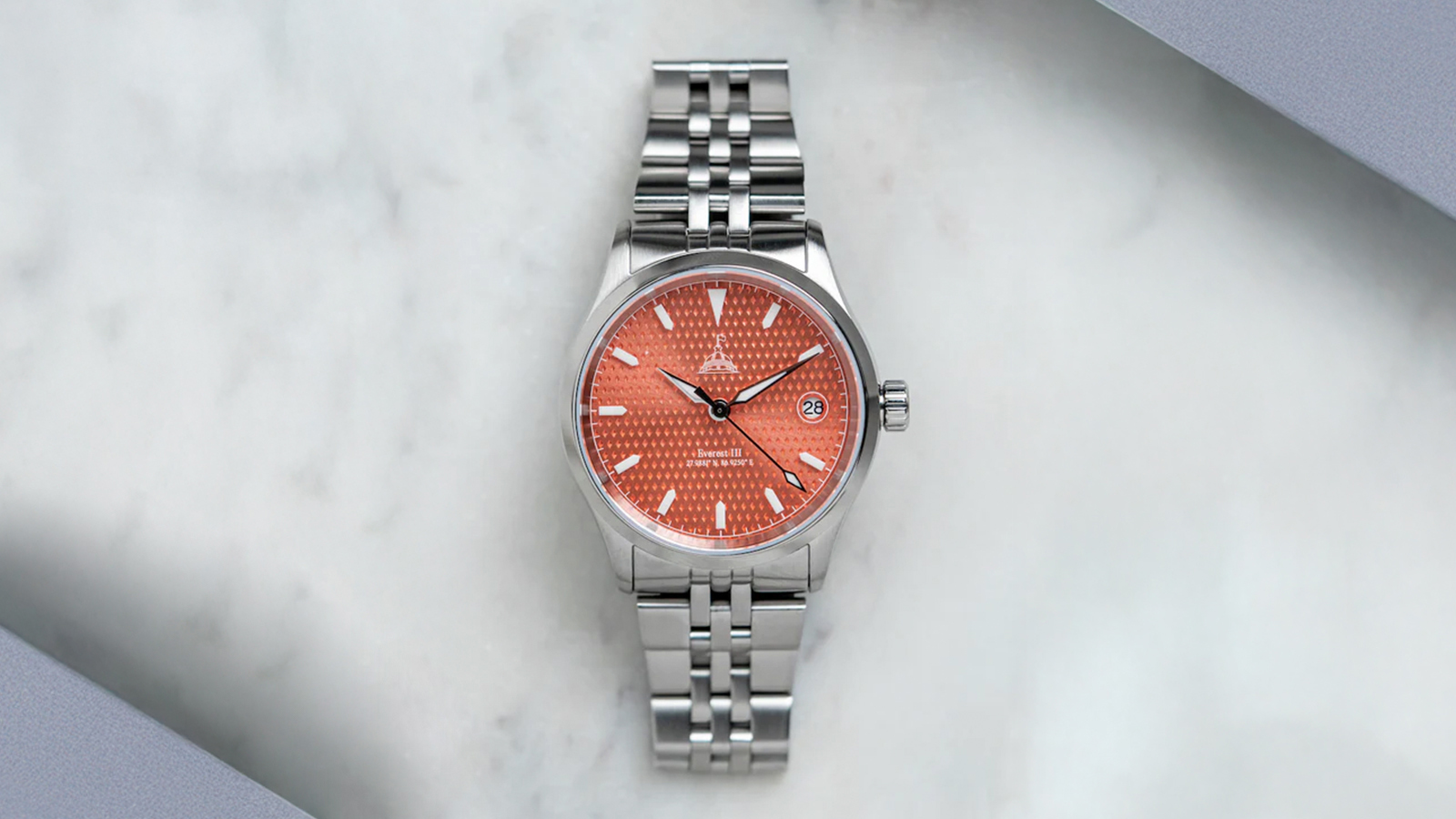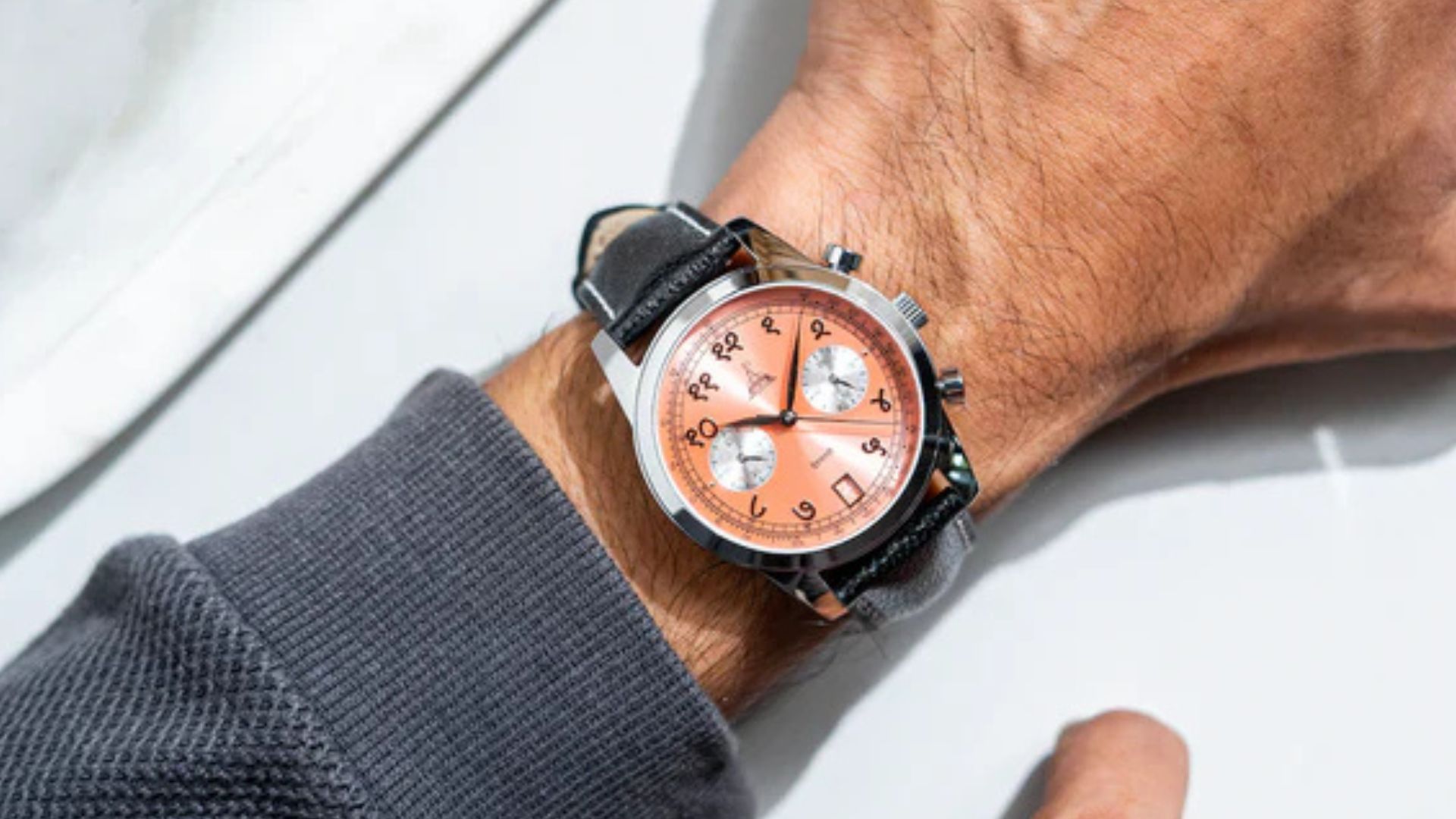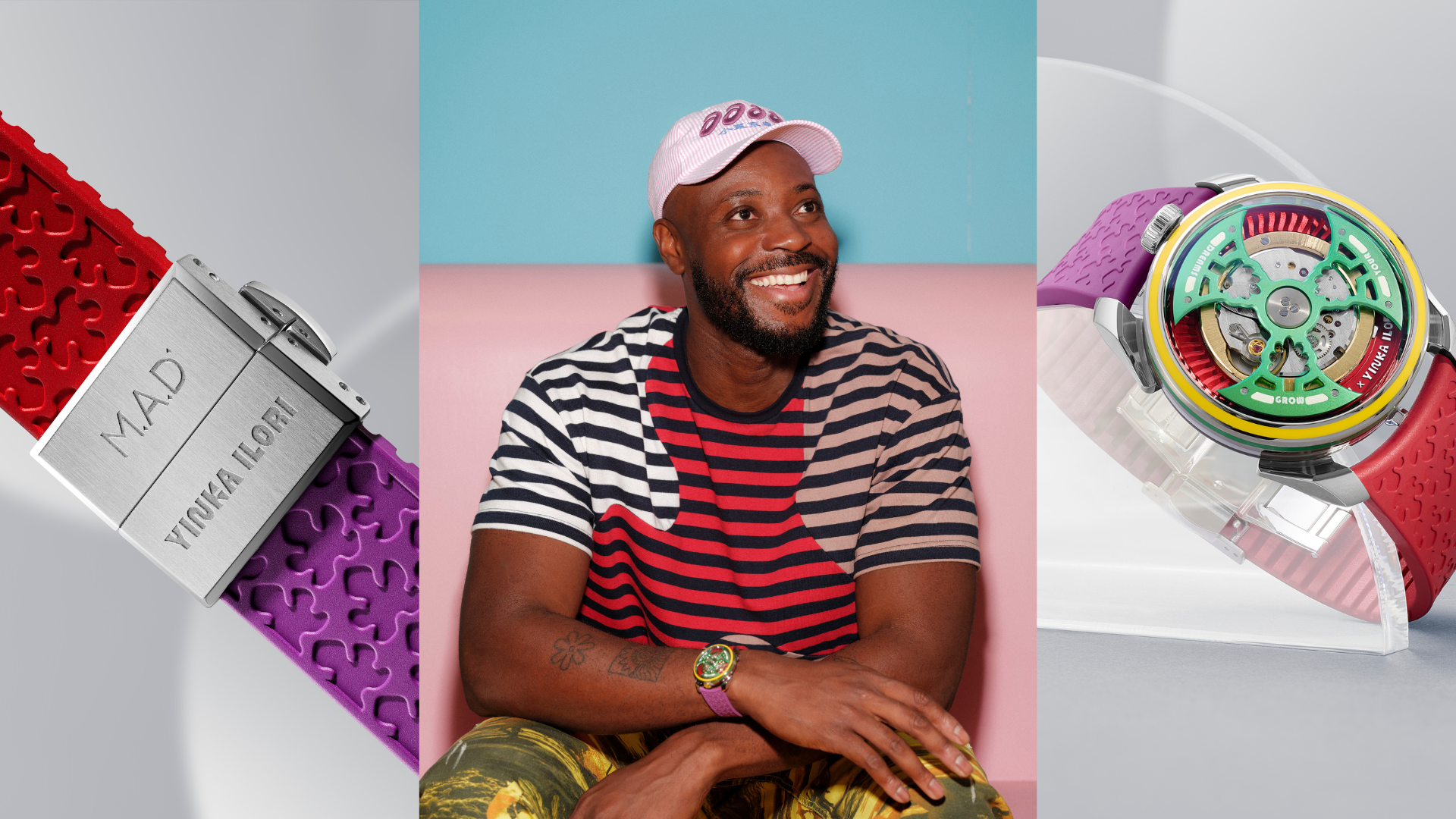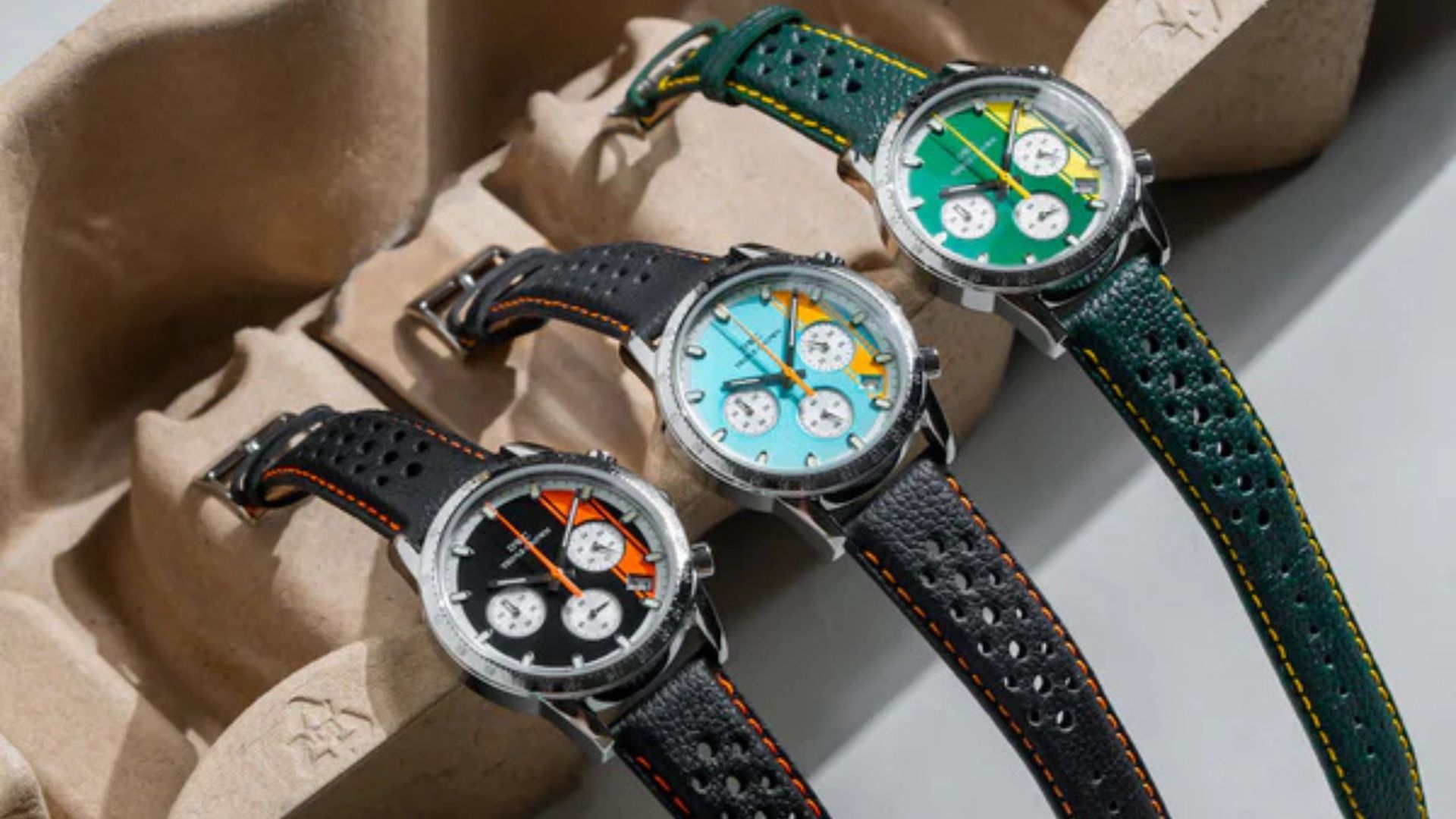How the Global Luxury Watch Brands Are Betting Big on India
.png)

India's luxury landscape has been expanding over the past few years. The success of Mumbai's Jio World Plaza, which opened late last year, is a glitzy reminder of the country’s rapidly growing appetite for all things luxe, including high-end timepieces. Even digital platforms have contributed to this growing accessibility of luxury brands – take, for instance, TimeVallée’s entry through Tata CliQ Luxury, India’s premier luxury lifestyle platform. Thanks to the positive response, TimeVallée has now partnered with Indian retailer Art Of Time to open a multi-brand boutique in India. The TimeVallée by Art Of Time opened its doors in the heart of Mumbai recently, bringing a variety of prestigious brands under one roof.
It’s then safe to say that luxury in India seems to be having its moment in the sun. Mumbai’s Jio World Plaza is home to a host of luxury brands, including newcomers to the Indian market like Balenciaga, Giorgio Armani Caffé, and Rimowa. Meanwhile, coveted watch brands like Jaeger-LeCoultre, IWC, Cartier, and Bvlgari now have their flagship boutiques in the city along with Rolex and Panerai. Even Jacob & Co., whose clientele includes A-listers in the world of sports and entertainment, opened its flagship boutique at Palladium Mall, Mumbai, in partnership with Ethos Limited earlier this year.
And it’s not just Mumbai, other Indian cities seem keen to welcome such luxury brands with open arms as well.
.png)
India, the Next Big Frontier?
India is being described as the next big market for luxury, with a report from Bain & Co. even suggesting that by 2030, the luxury market in India could be worth a staggering $200 billion. In October 2023, a study published by audit firm Deloitte predicted that by 2028, the export sales of Swiss watches in India will amount to over CHF 400 million and India will be among the top 10 Swiss export markets within a decade.
With a growing retail scene, combined with an increasing digital accessibility, the Indian market has embarked on an exciting journey, particularly when it comes to luxury watches. Gaurav Bhatia, CEO of Art Of Time, says the retailer’s partnership aims to bridge the gap between Indian consumers and watch brands. “TimeVallée is a visionary multi-brand watch retail concept, an inspirational space offering clients access to the most prestigious maisons,” he says. “Our mission at Art Of Time is to bring global luxury brands and experiences to Indian consumers in a manner that is on par with global standards.”
During an interview with GMT India in March, prior to the opening of the brand’s first physical boutique in India, Michael Guenoun, CEO of TimeVallée, shared how the decision to expand in India stemmed from the multi-brand boutique’s online partnership with Tata CliQ Luxury. He shared, “Our journey in India began last year, when we launched our online platform in association with Tata CliQ Luxury. Thanks to its huge success, we have decided to accelerate our physical presence in the country.”

The Rise of More Metros
The stats regarding India’s burgeoning luxe landscape are not surprising, given the strong domestic demand, physical and digital infrastructure, and global competitiveness, feels Almona Bhatia, Chief Business Development Officer, Tata CLiQ. “A huge untapped market is on the rise in metro and non-metro areas,” she says, highlighting the fact that disposable income is increasing and exposure to the world of luxury is also rising due to social media and access to luxury brands via e-commerce. “HNW (high-net-worth) consumers are purchasing luxury products in the country, while the youth is purchasing luxury products in newer categories – they are contributing to the expansion of this industry.”
While the biggest luxury markets in India have continued to be Delhi and Mumbai, other cities are also picking up pace. For example, Ahmedabad’s Palladium Mall has brought Ethos Summit and Just In Time for the city’s watch lovers. In a recent interview with GMT India, Jean-Marc Pontroué, CEO, Panerai, revealed that the brand is optimistic about its future growth in India. “Panerai continues to be among the leading watch brands in India. We have stores in Mumbai and Delhi, and we look forward to exploring other cities as well; Bangalore is a good example.”
This demand for luxury has long been in the making and it has been facilitated by greater accessibility to high-end brands, both online and in brick-and-mortar spaces. Erwan Rambourg’s 2020 book Future Luxe: What's Ahead for the Business of Luxury cites an interesting interaction. Upon being asked who will be the next China for Cartier, CEO Cyrille Vigneron cites India’s potential, given its size. He says, “India could be the next country to move the needle for luxury, as it should rapidly become the third most important economy in the world, and one could make a case for 50 to 100 million additional first-time purchasers in luxury ahead.”

Welcoming the First-Time Consumer
The overall growth in the luxury sector can be attributed to the increasing number of first-time luxury consumers. “According to the Credit Suisse Global Wealth Report 2022, the number of millionaires in India is estimated to double from 796,000 in 2021 to 1.6 million in 2026. Hence, as the Indian economy grows over the next few years, there will be a spike in the top-tier consuming class as well, as the HENRY (high earners, not rich yet) consumer cohort,” stresses Almona Bhatia.
Earlier in March, India signed a Trade and Economic Partnership Agreement (TEPA) with the four-nation European Free Trade Association (EFTA), which will aid bilateral commerce and investment. Iceland, Liechtenstein, Norway, and Switzerland are the member countries of EFTA. According to this agreement, India will be able to access high-quality products, including watches and clocks, from EFTA nations like Switzerland, at lower prices. This policy change will reduce customs and duties, making Swiss luxury watches more accessible to the Indian market.

When Information Is Currency
Greater awareness and information aiding visibility seem to be the driving factors behind this growth. When it comes to watchmaking, even independent brands are faring well in India, thanks to their increasing visibility. Highlighting the impact that increasing accessibility has on luxury spending, Gaurav Bhatia says, “Having access to global brands, trends, and beliefs has changed cultural perceptions about luxury spending. Now, it's seen as a reflection of success, resulting in more acceptance of luxury as part of lifestyle choices.”
Strong Retail Partnerships
The best brands are coming to India, and are exploring both digital platforms and physical retail. Ethos Watches has been a game changer as well, bringing multiple brands to India and even organising the GPHG exhibit in 2022. Moreover, Yashovardhan Saboo, Founder and Chairman of Ethos Ltd., became a part of the GPHG Jury in 2023, showcasing India’s clout in the international watchmaking scene.
The retailer network is certainly inspiring the big watch groups and even independent brands are eyeing a piece of the pie. Edouard Meylan, CEO and Owner of H. Moser & Cie. recently told GMT India that many brands have started considering India as one of the most strategic markets for the future. He said, “It’s a big population which is now discovering true independent watchmakers, and that makes a huge difference. We will see more brands entering the market and increasing visibility for all. Our objective is to open our own boutique in India with our partners at some point in the future.”
Gaurav Bhatia credits the boom in the market to the rise of luxury spaces. “The rise of dedicated watch spaces has also led to an increase in luxury watch purchases. As a consumer, the experience of visiting a store sometimes outweighs the products themselves,” he explains. “This includes trying a watch, learning about the brand’s history, as well as learning about the functionality. It all adds to the experience.”
.jpg)
Digital India
With the digital platforms getting a boost during the pandemic, the luxury sector has adapted to market realities and expanded its digital presence, particularly to tap into T2 and T3 markets. Almona Bhatia shares how online presence is a necessity for brands now, making them accessible even in non-metro markets. She says “The online accessibility of the HNWIs and luxury aspirants in metro and non-metro markets has enabled further growth. Moreover, customers appreciate the ease and comfort of purchasing online. While offline shopping is still prevalent, online platforms have also seen tremendous year-over-year growth by focusing on increasing the assortment, launching online-only exclusive collections, expanding the reach to T2/T3 markets, tapping new audiences, and so on.”

The Future: Luxury’s Watershed Moment in India
The growth potential of the Indian economy is also a positive factor that is attracting bigger brands to tap into the market. Almona Bhatia is confident that the market will continue to grow despite inflation. She adds, “While the luxury business in India is still at a nascent stage, it is growing. Luxury brands across categories have recognised India’s rising wealth trends and are eager to tap this market. Even with inflation, while it may influence first-time luxury buyers, given the kind of consumers the industry caters to, the upward trajectory will continue.”
While countries like the UAE have already established themselves as luxury markets, India does not seem far behind.



















